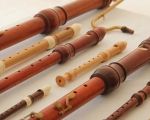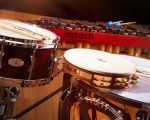Understanding the Importance of a Trumpet Mouthpiece
Choosing the right trumpet mouthpiece is often one of the most overlooked aspects when it comes to improving your playing. Yet, it plays a crucial role in shaping your sound and comfort. In my early days of playing the trumpet, I made the mistake of simply choosing a mouthpiece based on what my friends used. It wasn’t until years later that I realized how much a mouthpiece can affect my sound, tone, and endurance. Finding the right one can feel overwhelming, especially with so many options out there. But don’t worry—I’ve learned a lot along the way, and I’m here to help guide you through this important decision.
The Basics of Trumpet Mouthpieces
The trumpet mouthpiece consists of three primary components: the rim, the cup, and the throat. Each part serves a specific purpose, and understanding them can help you make an informed decision when choosing the best one for you.
1. The Rim: Comfort and Fit
The rim is the part of the mouthpiece that comes into contact with your lips. Its shape, size, and thickness all affect how comfortable it feels during play. A comfortable rim allows you to play longer without discomfort or fatigue. When choosing a rim, think about whether you want something that’s wide or narrow. A wider rim might feel more comfortable and reduce pressure, but it could also make it harder to play higher notes. Conversely, a narrower rim may give you greater control and precision but could cause discomfort after prolonged use.
2. The Cup: Tone and Depth
The cup is the bowl-shaped area inside the mouthpiece. The depth and shape of the cup greatly influence your tone. A deeper cup typically produces a darker, warmer sound, while a shallower cup tends to create a brighter, more focused tone. As a beginner, you might prefer a shallow cup to help with higher notes, but as you advance, you may want to experiment with deeper cups to achieve a richer sound. It's essential to strike a balance between tone quality and ease of playing.
3. The Throat: Airflow and Resistance
The throat of the mouthpiece controls the airflow. A smaller throat offers more resistance, which can help with control, while a larger throat allows more air to pass through, making it easier to produce a sound but often with less control. As you progress, you may find that adjusting the size of the throat based on your playing style makes a significant difference in your comfort and sound quality.
Factors to Consider When Choosing a Mouthpiece
While the rim, cup, and throat are the primary features of any trumpet mouthpiece, other factors also influence your choice. Here are some additional considerations that helped me refine my selection process.
1. Material
The material of a trumpet mouthpiece can affect its weight and tone. Most mouthpieces are made from brass, but the finish can vary. Gold, silver, and copper are commonly used for their distinct tonal qualities. I personally love the sound of a silver-plated mouthpiece, as it produces a bright tone without being too harsh. Gold-plated mouthpieces, on the other hand, offer a warmer tone and are also less likely to tarnish over time. It's important to experiment with different materials to see what best suits your playing style.
2. Size
Mouthpieces come in various sizes, typically ranging from small to large. The size refers to the diameter of the rim and the depth of the cup. Beginners often start with a medium-sized mouthpiece, as it offers a good balance between comfort and performance. If you're playing in a professional setting, you may choose a larger or smaller size based on your tonal preference and range. It can take some trial and error to find the right one, so don’t be afraid to experiment!
3. Playing Style
Your playing style and the type of music you typically perform will influence your choice of mouthpiece. If you play jazz, for example, you may prefer a smaller mouthpiece to help with faster note articulation and higher range. Classical players, on the other hand, may opt for a larger mouthpiece to achieve a fuller, more resonant tone. Think about the music you enjoy playing and what suits your sound the best.
Testing Different Mouthpieces
When it comes down to it, there’s no perfect formula for selecting the right trumpet mouthpiece. Each player is different, and what works for someone else may not work for you. The best way to find your perfect mouthpiece is to try as many as you can. If you have access to a music store that lets you test mouthpieces, I highly recommend you take advantage of that opportunity. Don’t rush the process—take your time to see how each one feels and sounds during practice sessions. This is how I found the mouthpiece that worked best for me, and it was worth the effort.
The Impact of Choosing the Right Mouthpiece
Choosing the right mouthpiece will not only improve your sound but also enhance your overall playing experience. Over the years, I’ve noticed a dramatic improvement in my tone, endurance, and comfort once I found the right match for my trumpet. It’s an investment that pays off over time, and the right mouthpiece can help you reach your full potential as a player. Plus, as you advance in your skills, you may find yourself switching mouthpieces depending on your needs at any given time—there’s always room for growth!
Remember, finding the right trumpet mouthpiece isn’t something you can rush. It takes time, experimentation, and a bit of trial and error. But once you find the right one, your playing will improve in ways you didn’t think possible. So, start exploring today, and enjoy the journey of discovering the perfect mouthpiece for you!








